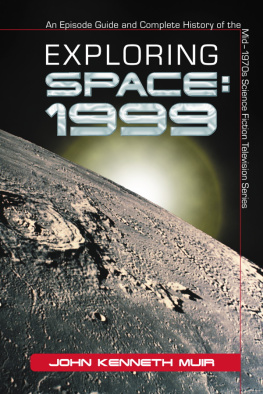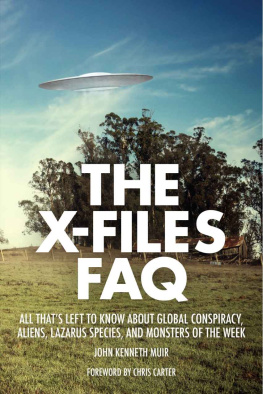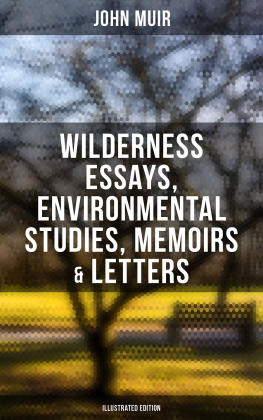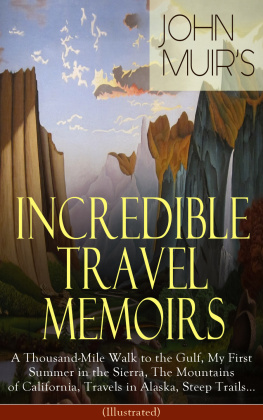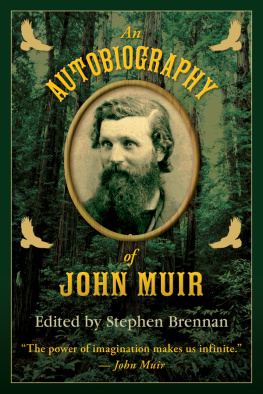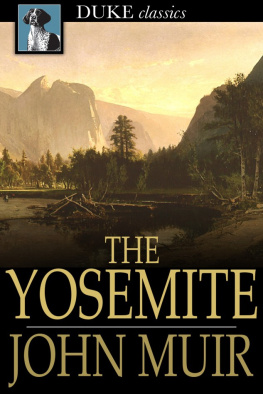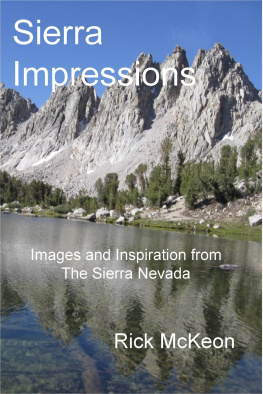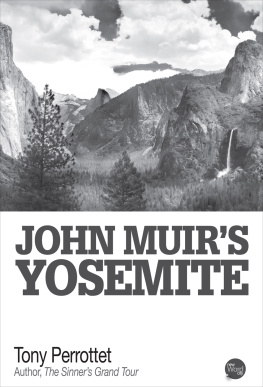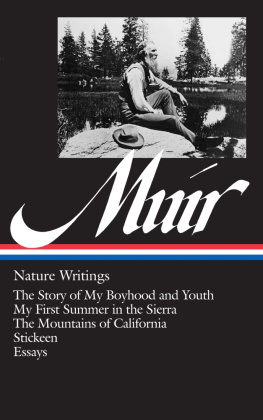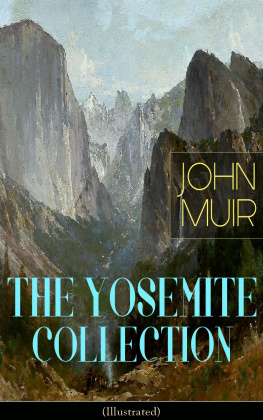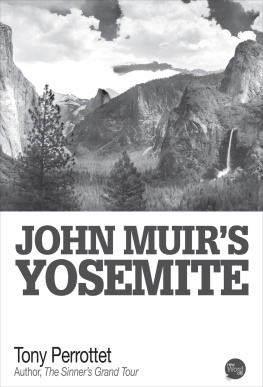Muir - My First Summer in the Sierra
Here you can read online Muir - My First Summer in the Sierra full text of the book (entire story) in english for free. Download pdf and epub, get meaning, cover and reviews about this ebook. City: New York;United States;Sierra Nevada, year: 2003;2011, publisher: Random House Publishing Group;Modern Library, genre: Home and family. Description of the work, (preface) as well as reviews are available. Best literature library LitArk.com created for fans of good reading and offers a wide selection of genres:
Romance novel
Science fiction
Adventure
Detective
Science
History
Home and family
Prose
Art
Politics
Computer
Non-fiction
Religion
Business
Children
Humor
Choose a favorite category and find really read worthwhile books. Enjoy immersion in the world of imagination, feel the emotions of the characters or learn something new for yourself, make an fascinating discovery.

- Book:My First Summer in the Sierra
- Author:
- Publisher:Random House Publishing Group;Modern Library
- Genre:
- Year:2003;2011
- City:New York;United States;Sierra Nevada
- Rating:5 / 5
- Favourites:Add to favourites
- Your mark:
- 100
- 1
- 2
- 3
- 4
- 5
My First Summer in the Sierra: summary, description and annotation
We offer to read an annotation, description, summary or preface (depends on what the author of the book "My First Summer in the Sierra" wrote himself). If you haven't found the necessary information about the book — write in the comments, we will try to find it.
Muir: author's other books
Who wrote My First Summer in the Sierra? Find out the surname, the name of the author of the book and a list of all author's works by series.
My First Summer in the Sierra — read online for free the complete book (whole text) full work
Below is the text of the book, divided by pages. System saving the place of the last page read, allows you to conveniently read the book "My First Summer in the Sierra" online for free, without having to search again every time where you left off. Put a bookmark, and you can go to the page where you finished reading at any time.
Font size:
Interval:
Bookmark:
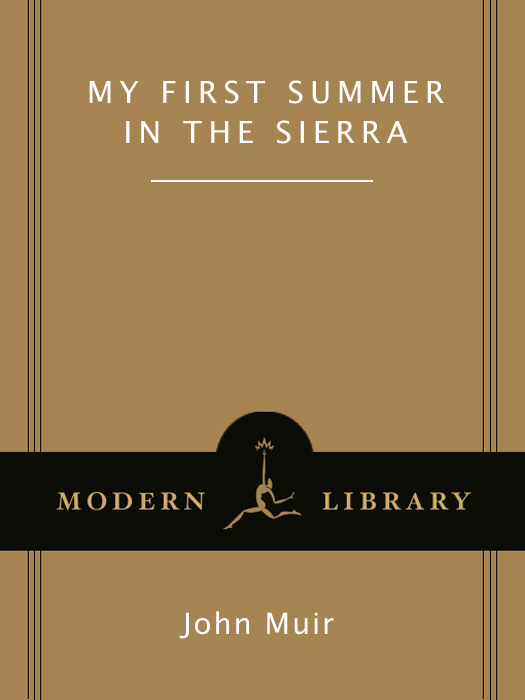
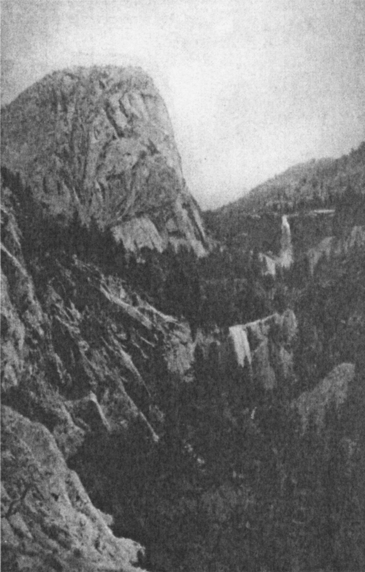

John Muir was born on April 21, 1838, in Dunbar, Scotland, the third of eight children of Daniel Muir and Anne Gilrye Muir. In 1849, the Muir family immigrated to the United States and settled on a farm near Portage, Wisconsin. As the eldest son, Muir labored unremittingly on the family farm, where his affection for the wilderness and his interest in science and literature took root. In 1860, Muirs inventiveness in the design of machines led to an exhibit at the state fair in Madison; the acclaim his inventions received resulted in numerous job offers and Muirs acceptance at the University of Wisconsin.
Although Muir never received a degree (he left after three years), he studied geology and botany, discovered Emerson and Thoreau, and began to develop a conception of the natural world independent of his fathers stricter religious one. Still, it would be several years before Muir would make the study and preservation of the wilderness his lifes work.
In September 1867, his sight restored after a serious eye injury, Muir set out on what was to become a 1,000-mile walk from Indiana to Florida. He then traveled to California, arriving in San Francisco in March 1868, and walked for six weeks across the state until he arrived at the Sierra Nevada mountains, where he would spend much of the next ten years exploring the place he called the Range of Light.
Journals from these excursions would be collected in book form in My First Summer in the Sierra (1911) and A Thousand-Mile Walk to the Gulf (1916). But Muirs earliest published writings appeared as magazine articles on Sierra geology and the glacial origin of the Yosemite Valley. He would go on to publish nearly one hundred essays and articles in newspapers and magazines such as the San Francisco Bulletin, Overland Monthly, and Scribners Monthly. Admirers of Muirs work like Ralph Waldo Emerson and President Theodore Roosevelt were known to have met Muir and to have been touched by his passion for the wilderness.
In 1879, Muir made his first of many trips to Alaska, where he discovered Glacier Bay. The following year, he married Louise Strentzel, the daughter of a wealthy fruit rancher, and moved to Martinez, California. Muir spent much of his time managing the Strentzel ranch and raising his daughters, Wanda and Helen. In 1888, Muirs wife sold parcels of the family estate to allow Muir more time for his Sierra studies.
Soon after, Muir met Robert Underwood Johnson, associate editor of The Century Magazine, who encouraged him to write two articles on the need to protect the wilderness of the Yosemite Valley. These articles appeared in The Century in the fall of 1890. Wilderness preservation, thanks to Muirs literary zeal and Johnsons lobbying efforts, received more publicity than ever before; their efforts paid off and Yosemite was designated a national park. In 1892, Muir, Johnson, and others founded the Sierra Club, and Muir served as its president until his death in 1914.
Another fruitful result of Muirs friendship with Johnson was the publication of Muirs first book, The Mountains of California. Published in 1894, The Mountains of California was an instant success and continued Muirs education of his countrymen in the advantages of wild country. Muir would continue to write on behalf of the wilderness, and he published, among other books, Our National Parks (1901), The Yosemite (1912), The Story of My Boyhood and Youth (1913), and Travels in Alaska (1915). Though Muir was crucial to the designation of Sequoia, Mount Rainier, the Petrified Forest, and the Grand Canyon as national parks, he lost his last preservationist battle over the damming of the Hetch Hetchy Valley in Yosemite. Nonetheless, he would set a national environmental movement in motion that continues today.
John Muir died of pneumonia in January 1914 while visiting one of his daughters in California. Muirs legacy is vast and includes Muir Glacier in Alaska, and in California, the John Muir Trail, the John Muir Historic Site in Martinez, and Muir Woods National Monument.
Photographs by Herbert W. Gleason
Frontispiece
Photo section following:
Sketches Made by the Author in 1869
John Muir is one of the few dead writers to be recently elected to political office. In 2003, Lee Stetson, an actor who has portrayed the Scottish-born John Muir so long he has become the naturalists clone, won a seat on the Mariposa County board of supervisors. A local Republican leader complained to the Los Angeles Times that most people voted for him as John Muir, not [as] Stetson. Mariposa County, which includes Yosemite Valley as well as huge tracts of corporate-owned forest, is a major battlefield in an eleventh-hour crusade to slow the development of the Sierra foothills.
Over the last generation the great tectonic drama of California has been the population boom in the Central Valley, as young families and immigrants, driven out of the coastal counties by the nations highest home prices, have found affordable suburban nests on the outskirts of Sacramento, Stockton, Fresno, and Modesto. As the Valley floor, in turn, has become a sprawling new Los Angeles with gridlock, crime, and smog, its more affluent residents have migrated into the foothills where Argonauts once dug for gold and the young John Muir tended sheep. Having already conquered the gold country east of Sacramento, trophy homes and Lexus subdivisions now threaten the rustic flanks of Yosemite.
Here, in an incomparable but imperiled landscape where ponderosa pine and incense cedar mingle with black oak and manzanita, Muir has been resurrectedOld Testament beard, Scots brogue, and allto lead another last-ditch fight against the engines of greed. His actualit, as certain Parisian philosophers would put it, is extraordinary. For defenders of the wild habitat, Muir remains Californias reverse Moses: the prophet who has unfailingly guided modern generations back to the sublimity of wilderness. My First Summer in the Sierra, his poignant ode to his beloved Range of Light, still ignites sacred passions. Its pantheistic values, indeed, hegemonize the contemporary environmental movement.
Yet for many others, the old man of the mountains remains notorious: a progress-hating fanatic, the ranting John Brown of the Merced. As one of Muir/Stetsons foes told the Los Angeles Times, Lets put it this way, Im not a fan of John Muir. I dont think he was real good for the Sierras. I dont think his Sierra Club has been good for the Sierras. They took a good thing and made it an extreme.
But extremist or not, the controversial first president of the Sierra Club has become the most influential Californian of all time. His living legacy overshadows even those of Walt Disney, Earl Warren, Aimee Semple McPherson, and David Packard. It is impossible to debate land use or environment in California without calling John Muir to the witness box. He has become as integral to the self-consciousness of California as Emerson is to New England or Faulkner to the deep South.
Font size:
Interval:
Bookmark:
Similar books «My First Summer in the Sierra»
Look at similar books to My First Summer in the Sierra. We have selected literature similar in name and meaning in the hope of providing readers with more options to find new, interesting, not yet read works.
Discussion, reviews of the book My First Summer in the Sierra and just readers' own opinions. Leave your comments, write what you think about the work, its meaning or the main characters. Specify what exactly you liked and what you didn't like, and why you think so.



